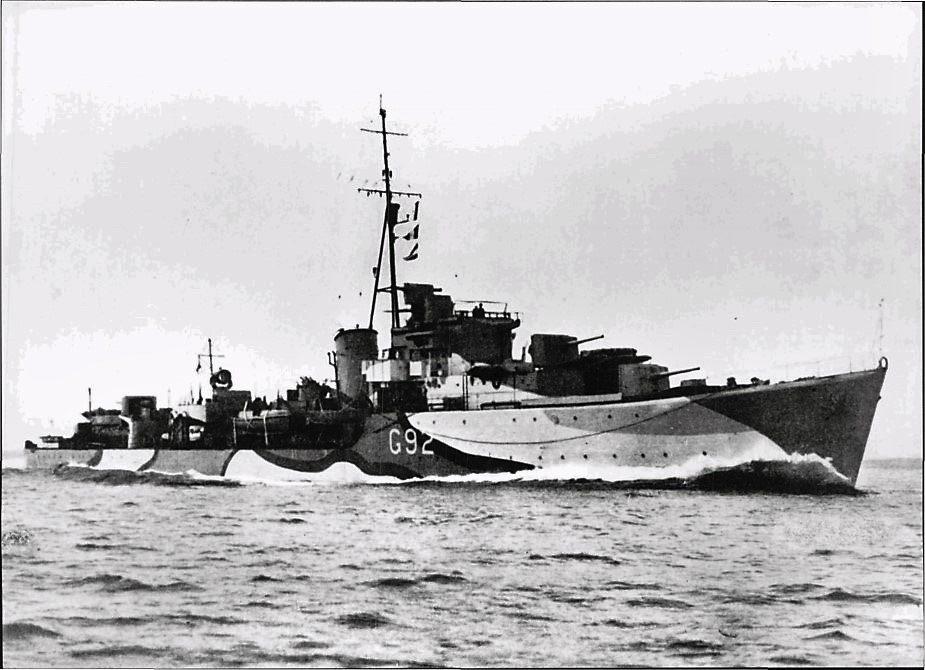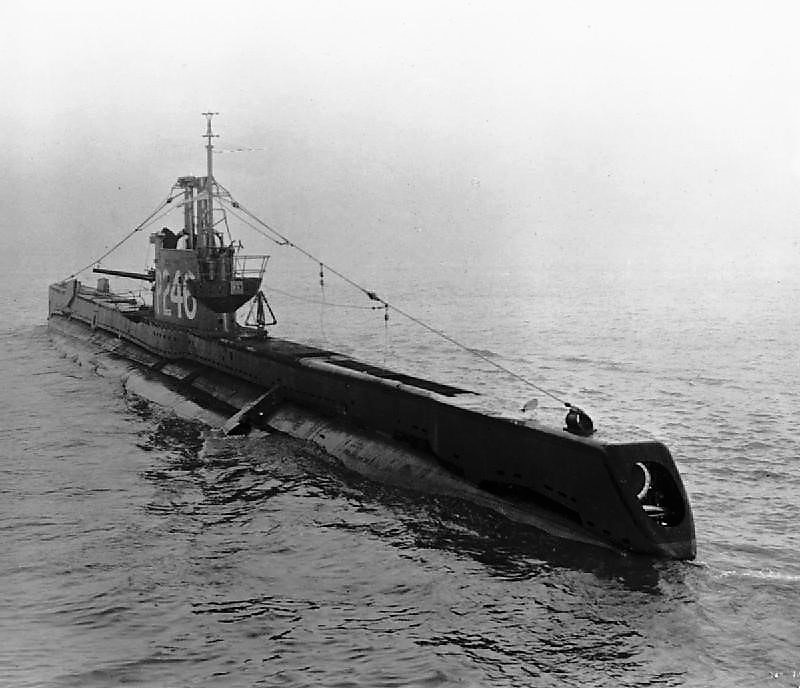- Author
- A.N. Other
- Subjects
- Ship histories and stories, WWII operations, History - WW2
- Tags
-
- RAN Ships
- HMAS Quickmatch
- Publication
- June 2021 edition of the Naval Historical Review (all rights reserved)
Also published as Occasional Paper 156, March 2023
By Max Hayles and R.C.H. Mason
The first part of this story by Max Hayles appeared in the June 2007 edition of the Naval Historical Review with the sequel by R. C. H. Mason in the subsequent edition. Readers might find the complete story of interest.
On September 30th 1944, HMAS Quickmatch was emergency destroyer in Trincomalee harbour, Ceylon (now Sri Lanka) moored at buoy D13. Steam for full speed was at thirty minutes’ notice.
Near midnight, a signal was received to put to sea to rendezvous with HMS/M Statesman, an ‘S’ Class submarine, to take off their First Lieutenant who had been taken ill with severe appendicitis. The sub was said to be approximately 150 nautical miles north of the Nicobars, in the Bay of Bengal.
As a signalman, my next watch on the bridge was the middle watch (the one we all loved), but I was woken at 2300 for sea duty, and took position on the forecastle with Aldis lamp for slipping the cable from the buoy.
We proceeded to sea at 0015 at 25 knots, and later increased to 29 knots. After 30 hours steaming, the submarine was not in the rendezvous position, according to our navigator. We searched around at 15 knots, but the submarine found us first and fired a red flare at 0510, October 2nd, 30 degrees on starboard bow. The required challenge was made and Statesman made the correct reply.
All hands were on deck, the forward port whaler was manned. It included me with the obligatory pair of semaphore hand flags and an Aldis lamp complete with heavy battery on a leather strap around my neck.

Due to the heavy swell running, the Captain slewed Quickmatch around to create a slick and released some oil, whilst the whaler was lowered to the waterline. The coxswain waited until the crest of a wave swept under us, and yelled to two seamen to trip to falls.
Unfortunately, only one slip opened and we found ourselves hanging at about 45 degrees until the next swell swept through and then we were away. Meanwhile Statesman had surfaced, and was wallowing heavily in the swell.
By the time the seamen had sorted themselves out, positioned their oars, and started rowing, the whaler had been swept some distance away from the submarine, and the going was pretty tough. I had positioned myself on the deck in the bow, sitting in about a foot of water.
Then we were alongside the submarine, where several of its crew were on deck including the First Lieutenant who was firmly encased in a stretcher. The big problem was that because of the submarine’s bulbous sides, we could not really get alongside. Time and again we were carried up on a swell, only to collide heavily with the bulge and slither sideways back into an angry swell.
Our seamen struggled to gain control by fending off, with oars flailing everywhere. In trying to help I was struck heavily in the back by the butt end of an oar.
At one stage, the handle end of an oar became firmly jammed in one of the submarine’s flooding slots, and had to be dodged by the crew until it could be recovered. With the whaler rising and falling several feet, sometimes the oar would crash into the boat, or be overhead of the crew.
Attempts to keep alongside were impossible, and there was a risk of the whaler being destroyed, so it was decided that the only way to get the sick man on board was to throw him broadside on into the whaler. Two of our biggest and strongest seamen stood up in the boat, whilst two others tried to hold on to them.
On the count of three, the First Lieutenant was thrown bodily, caught successfully, and laid across two thwarts. His case of personal effects was thrown to me, which I caught. We threw a bag of bread to the submarine’s crew, and then we were away.
We all returned to the ship soaking wet. The boat was hoisted aboard and after a change of clothes, we resumed our watch duties.
Quickmatch turned into the wind at 11 knots to make things as smooth as possible, and the First Lieutenant was operated on immediately. When it was all over, we turned for Trincomalee at 22 knots, and arrived at 0630 next day.
Our patient was OK, but we missed a trip to Aden as escort to the battleship, HMS Valiant.
The sequel:
Dear Editor,
I refer to the article HMAS Quickmatch to the Rescue by Max Hayles. I am most grateful to him for revealing that it was Quickmatch which came to the rescue of Lieutenant Neil Strouts, RNVR, the First Lieutenant of HM Submarine Statesman in October 1944. I was the Navigating Officer for the whole of Statesman’s only commission and a good friend of Neil Strouts.
We were on patrol in the Malacca Straits when Neil first complained of stomach ache. He continued his watches for two days until the pain became acute and we diagnosed him with acute appendicitis. He took to his bunk curled up in agony. He didn’t even laugh when I suggested that I shave him preparatory to an operation on the wardroom table. We had no doctor or Sick Berth Attendant on board. Fortunately, we were able to tack on an appeal for help to an Enemy Report and Max Hayles picked up the story from there. As soon as we received the signal to rendezvous with Quickmatch we proceeded on the surface by night and dived by day to the rendezvous point where, I can confirm, there was an uncomfortable swell.
On surfacing, we took Neil up to the casing wrapped in a Neil Robinson stretcher and waited for the whaler from Quickmatch to come alongside. As Max describes, it was not easy for the boat to hover alongside the ballast tanks in the swell but the crew did a magnificent job. I was on one end of the stretcher and the Coxswain on the other as we decided to launch the patient with a ‘1, 2, 3’ and let go.
None of us on board Statesman had ever served with Australians. We had no idea of the unique skills learned by surf lifesavers in small boats and I believe to this day that no other nation could have produced seamen who were able to stand in a whaler and catch a 12 stone parcel. It was awe-inspiring and a great relief to us who had launched our Jimmy across the heaving sea. My admiration for the RAN began on that day and has never waned.
The Captain, Bob Bulkeley, later emigrated to Western Australia. Randle Fielden and Bob Sproule are alive and living in Norfolk and Wales respectively. Sadly, Bob Bulkeley and Neil Strouts will not be attending future reunions.
After the war Neil and his bride Bridget met up with Mary and me in London for a movie in Leicester Square. We were in a long queue when suddenly Neil said ‘Good God, the bloke in front is the doctor who took out my appendix!’ It was. None of us saw the movie but we had an excellent lunch.
For the record Statesman is credited with 49 vessels sunk and over 1,200 rounds of ammunition expended.
LCDR R. C. H. Mason AM OBE RN Rtd

HMS Statesman




